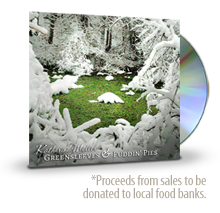Tips & Tricks: Fun With Scales, Part I
April 15th, 2014 by Katherine Moller
Fun with scales? Did I say fun? Ok, so, perhaps my idea of fun is a little twisted, but I do actually enjoy playing scales, and have several different ways that I practice them to keep the exercise new and exciting. Today we are starting with my current favourite method of practicing scales.
I see practicing scales as serving 4 different purposes:
1. You can work on your tuning
2. You can work on your tone
3. You can work on your bow technique
4. You can work on your vibrato
Today’s exercise is mostly focusing on the first three, however, you could incorporate vibrato into the exercise as well. Unless I am specifically working on vibrato, I generally like to practice scales with a pure tone so I can hear my tuning clearly.
Step 1: I start by playing my scale slowly, playing each note like a whole note:
This exercise allows me to listen closely to both my tuning and my tone. I allows me assess to how well my bow arm is working and what inconsistencies may exist in the motion of my arm.
Step 2: I play my scale in dotted half notes:
Step 3: I play my scale in half notes:
Step 4: I play my scale in quarter notes:
During all of these steps I continue using my whole bow.
Step 5: I play my scale in eighth notes, slurring two notes together:
Step 6: I play my scale in triplets, slurring three notes together:
Step 7: I play my scale in sixteenth notes, slurring four notes together.
At this point, I will not continue with the examples, but I continue in the same method, slurring 6 notes, 8 notes, 12 notes, 16 notes, the whole scale going up, and the whole scale going down. I have not shown examples for this as I usually practice scales through four octaves, which allows me to continue with the extrapolation further than can be done with a scale through two octaves.
Practicing scales in this manner is a nice way to start my practice session. I begin practicing with calm, slow playing, listening to my tone and tuning. As the scale goes faster, it forces my left hand fingers to work faster as I strive to maintain my accuracy and clarity. This is a challenge that I enjoy!
Have fun practicing your scales!
Comments are closed.









